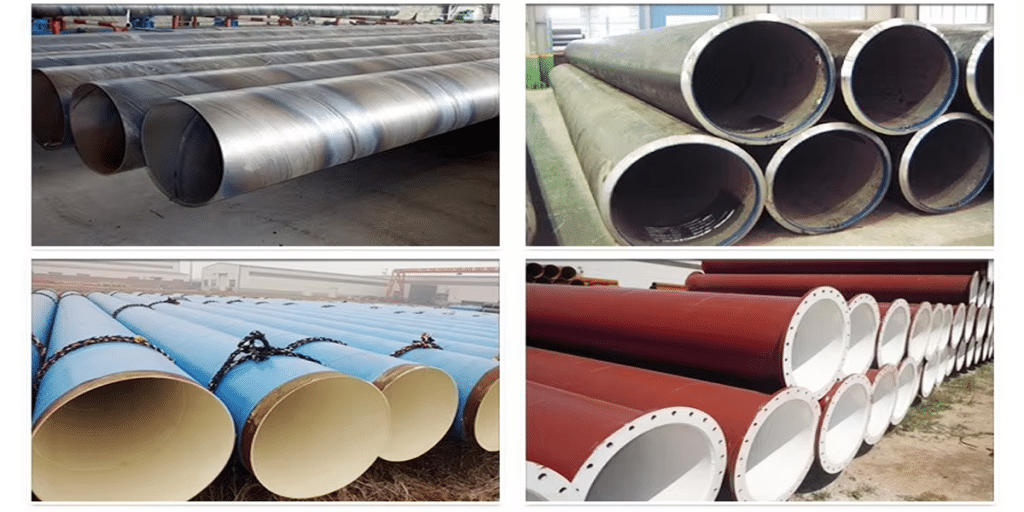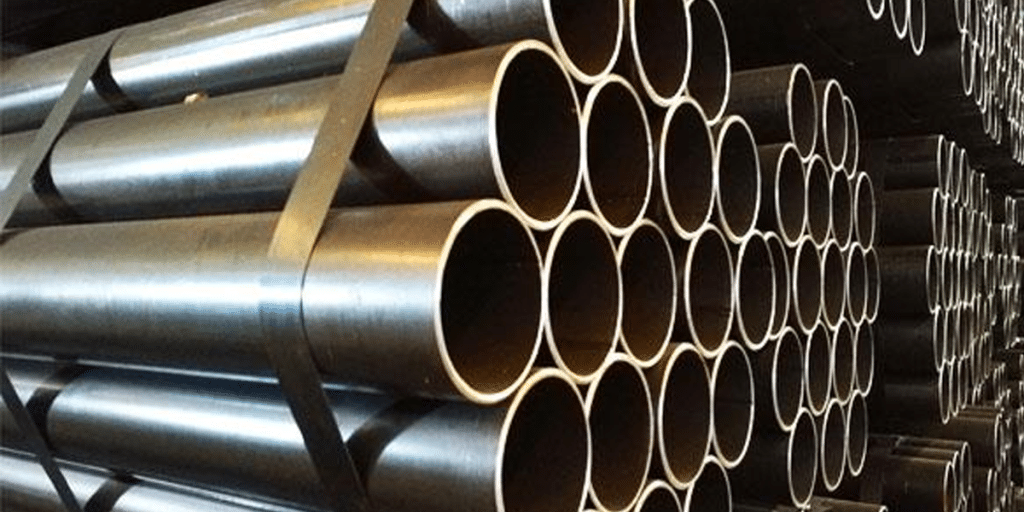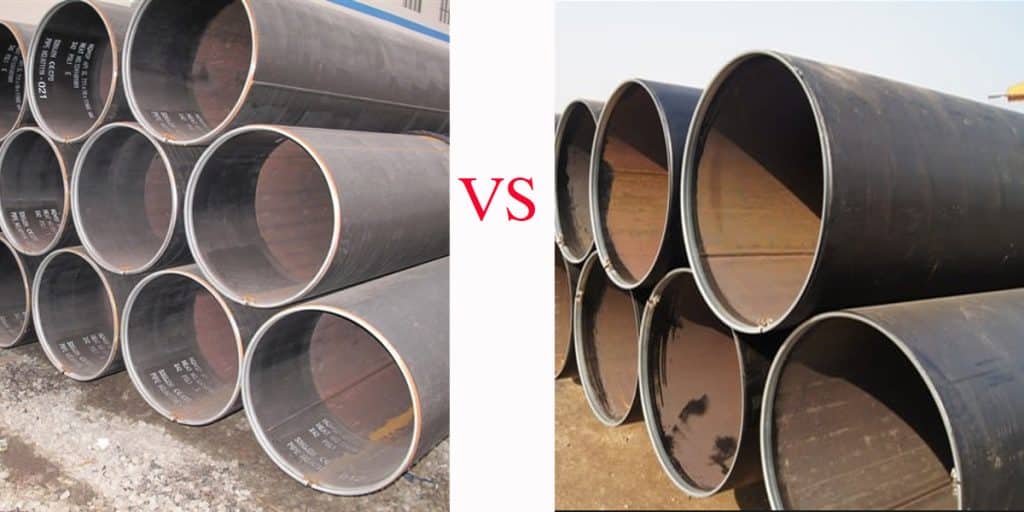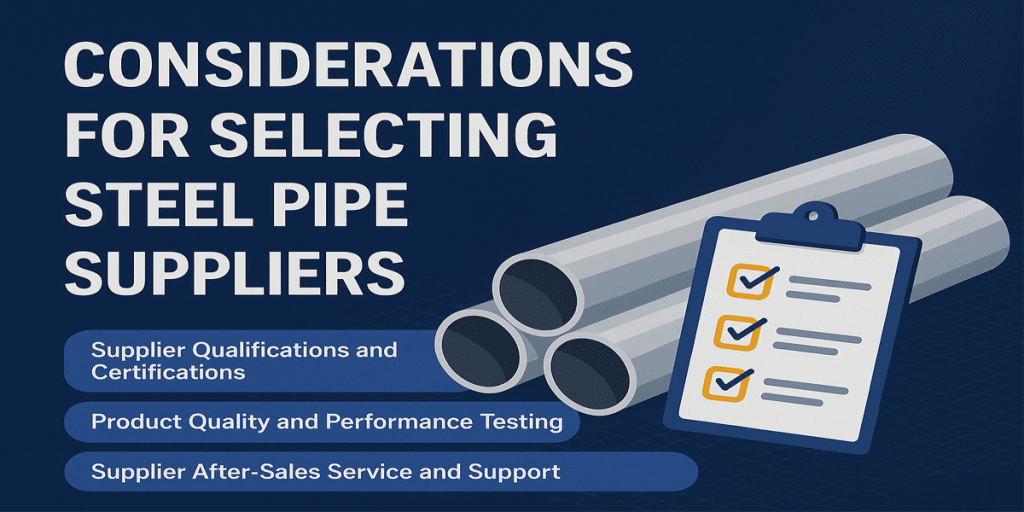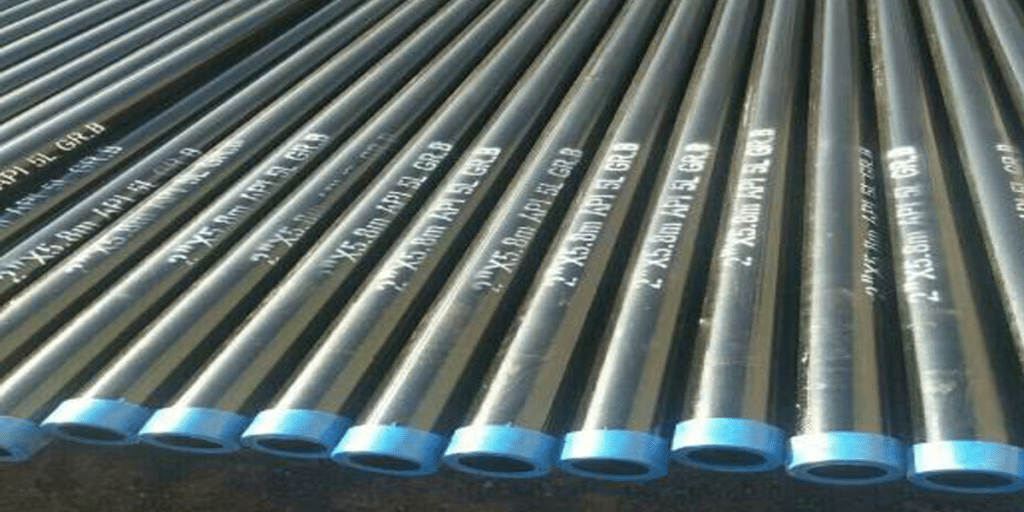- 1. What Is FBE Coated Steel Pipe?
- 2. Standard FBE Coating Process for Steel Pipes
- 3. FBE Coating Thickness and Inspection Standards
- 4. International Standards and Compliance Requirements for FBE Coated Steel Pipes
- 5. Key Control Points in the FBE Coating Process
- 6. Application Performance and Quality Assurance Recommendations for FBE Coated Steel Pipes
With the rapid development of global infrastructure and the rising demand for corrosion-resistant pipeline solutions in sectors such as oil & gas and municipal engineering, FBE coated steel pipes have emerged as a preferred choice due to their excellent protective performance and efficient application. This article provides a comprehensive interpretation of the FBE coating process, focusing on construction procedures, key quality control points, and industry standards such as the FBE coating specifications and the widely recognized CSA Z245.20 standard.
Today’s market emphasis has shifted from materials alone to the precise control of the entire fusion bonded epoxy application process, where achieving consistent coating thickness standards is crucial for long-term pipeline protection. But in real-world steel pipe coating construction, how can each step of the FBE coating process be seamlessly integrated? What are the critical parameters for epoxy powder curing that ensure optimal adhesion and durability? And when following CSA Z245.20, which overlooked details could make or break the final coating quality? These are the questions this article aims to explore in depth!
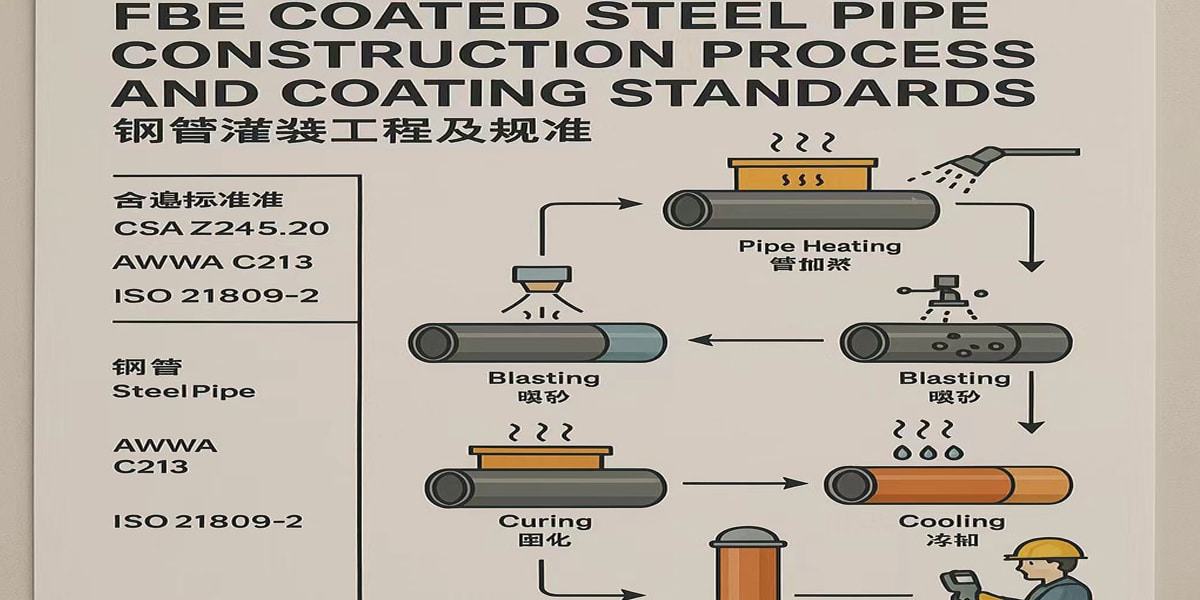
What Is FBE Coated Steel Pipe?
Fusion Bonded Epoxy (FBE) coated steel pipe refers to a type of steel pipe that is coated with a thermosetting epoxy powder, applied through a controlled high-temperature process. After surface preparation (such as abrasive blasting), the pipe is heated, and epoxy powder is sprayed onto the surface. The powder melts, flows, and cures (epoxy powder curing) into a tough, chemically bonded protective layer. This is known as the FBE coating process, widely recognized as one of the most reliable methods for long-term corrosion protection.
Importance of the Coating
In buried or highly corrosive environments, steel pipes are vulnerable to rapid degradation. The FBE coating acts as a barrier and offers strong adhesion, chemical resistance, and durability, playing a critical role in protecting pipeline integrity.
Excellent corrosion resistance: Prevents ingress of moisture, oxygen, salts, and other corrosive agents.
Compliance with coating thickness standards: Ensures uniform protection and reduces the risk of localized corrosion.
Enhanced durability and operational safety: Particularly important for oil & gas transmission and municipal infrastructure.
Precise control in epoxy powder application: Quality depends heavily on correct execution of the FBE coating process, including epoxy powder curing conditions such as temperature and time.
The application of this coating must follow international FBE coating specifications, such as the widely adopted CSA Z245.20 standard, which provides comprehensive guidance on material performance, process control, and quality assurance.
Application Fields
Thanks to its superior performance, FBE coated steel pipe is widely used across various industries and infrastructure projects, including:
Oil and gas transmission pipelines: Both onshore and offshore applications.
Municipal water supply and wastewater systems: For clean drinking water and safe disposal.
Power plant cooling water systems and industrial fluid transport.
Marine and port infrastructure: Where exposure to saltwater and harsh conditions is constant.
Underground and high-humidity installations: Where long-term corrosion resistance is essential.
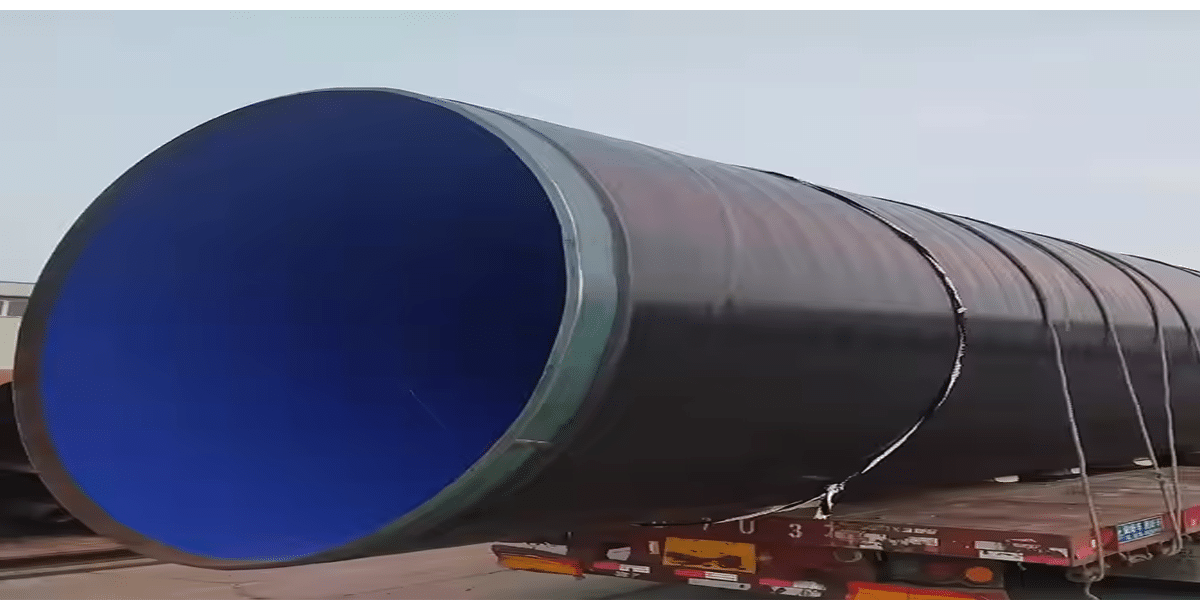
Standard FBE Coating Process for Steel Pipes
A high-quality FBE coating process requires a combination of proper equipment, process control, and strict adherence to international standards. By maintaining precise control over coating thickness, epoxy powder application, and curing conditions, contractors can ensure that FBE coated steel pipes meet the durability and performance demands of modern steel pipe anti-corrosion construction. This process is widely used in oil & gas, water transmission, and infrastructure projects requiring long-lasting coatings. Below is the typical workflow:
1. Surface Preparation
Purpose: To remove contaminants like rust, oil, mill scale, and dust, ensuring optimal adhesion of the epoxy powder.
Method: Abrasive blasting (grit or shot) is commonly used to achieve a cleanliness level of Sa 2.5 or higher.
Surface Profile: A roughness of 40–100 μm is usually maintained for proper mechanical bonding.
2. Preheating
Purpose: To heat the pipe surface to the required temperature for epoxy powder to melt and bond effectively.
Temperature Range: Typically between 180°C and 250°C, depending on the powder formulation and application specifications.
Heating Method: Induction or gas-fired heating is commonly used for uniform and rapid heating.
3. Epoxy Powder Application
Method: Electrostatic spray guns apply fusion bonded epoxy powder to the hot pipe surface.
Key Parameters:
Uniform coverage with no pinholes or overspray;
Coating thickness typically ranges between 250–500 μm, depending on project specifications and coating thickness standards such as CSA Z245.20.
4. Fusion and Flow
Process: The applied powder melts on contact with the heated pipe and begins to flow, fusing into a uniform, continuous film.
Fusion Time: Usually lasts a few seconds to allow complete melting and flow-out without degrading the powder.
5. Epoxy Powder Curing
Mechanism: The thermosetting epoxy undergoes chemical crosslinking, forming a tough, bonded, and corrosion-resistant layer.
Control: Proper epoxy powder curing time and temperature are critical to achieve the required mechanical and chemical properties.
6. Cooling
Method: The coated pipe is cooled using ambient air or water mist spray.
Objective: To reduce pipe temperature to safe handling levels without inducing stress cracks or coating delamination.
7. Inspection and Quality Control
Tests and Checks:
Coating thickness verification;
Adhesion testing;
Visual inspection for holidays, pinholes, or defects;
Optional tests: hot water soak, cathodic disbondment, thermal shock.
Reference Standards: Procedures conform to FBE coating specifications, including CSA Z245.20 and ISO 21809 where applicable.
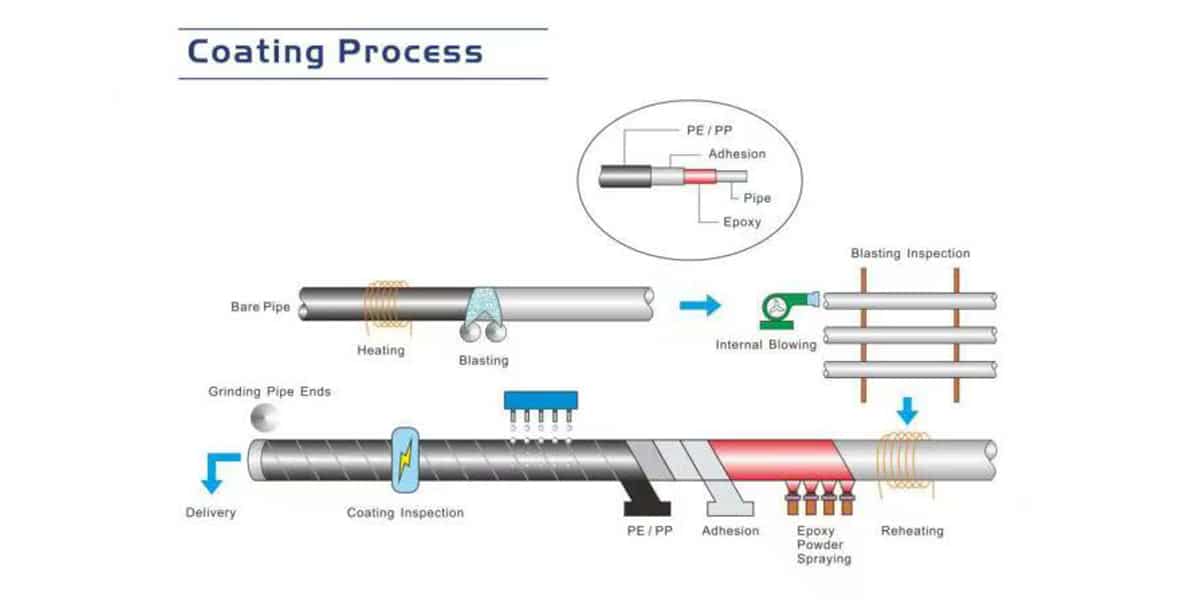
FBE Coating Thickness and Inspection Standards
1. Coating Thickness Requirements
The coating thickness of Fusion Bonded Epoxy (FBE) coated steel pipes plays a critical role in determining corrosion resistance, mechanical durability, and long-term pipeline integrity. The required thickness depends on the application type, environmental exposure, and governing standards.
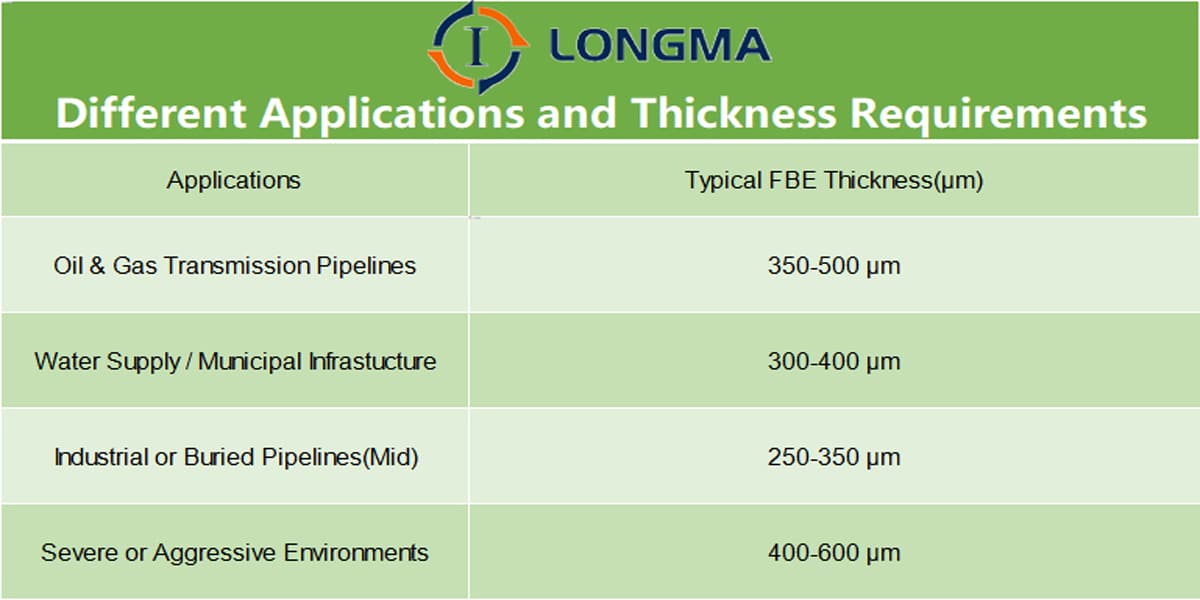
Note: Thickness is specified as dry film thickness (DFT) and must be consistent across the coated surface
2. Relevant Standards for Thickness and Quality
CSA Z245.20 (Canada): One of the most widely adopted standards, providing detailed classification of FBE coatings, minimum thickness requirements, adhesion performance, and flexibility testing.
ISO 21809-2 (International): Covers external FBE coatings for buried or submerged steel pipelines used in the petroleum and natural gas industries.
AWWA C213 (USA): For FBE coatings on steel water pipelines, specifying minimum DFT and physical performance requirements.
3. Coating Thickness Inspection Methods
To ensure that the coating thickness standard is met, the following non-destructive testing (NDT) methods are commonly used:
Magnetic Induction Thickness Gauge (most common)
Measures DFT using magnetic properties of steel.
Spot-checked across multiple pipe surface zones (e.g., 12 o’clock, 3 o’clock, 6 o’clock, 9 o’clock positions).
Coating Holiday Detector (High Voltage Spark Testing)
Detects pinholes or voids in thick coatings.
Required for coatings above ~300 μm to ensure no uncoated spots.
Microscopic Cross-Section (Destructive – Lab)
Cut and embed coating sample to measure layer thickness under microscope.
Used for sample-based QA/QC and certification.
4. Quality Control Criteria
A properly coated pipe must meet the following QA/QC thresholds:
Minimum average DFT as per specification (e.g., CSA Z245.20 recommends no area should fall below 90% of minimum value).
No excessive buildup: Overly thick coating (>600 μm) can cause cracking during curing or handling.
Uniformity: Thickness variation should not exceed ±20% from the target.
International Standards and Compliance Requirements for FBE Coated Steel Pipes
As global infrastructure and energy projects increasingly demand consistent quality and long-term performance, FBE coated steel pipes must comply with widely recognized international standards. These standards not only define technical specifications but also regulate testing, epoxy powder application, and coating process control to ensure reliability in diverse environments.
1. CSA Z245.20 – Canada
Full Name: Plant-Applied External Fusion Bond Epoxy Coating for Steel Pipe
Overview:
Sets requirements for the FBE coating process, including surface preparation, epoxy powder curing, and film integrity.
Defines coating classes (e.g., 1A, 1B, 2A) based on coating thickness, flexibility, and adhesion.
Mandates coating thickness standards, typically 350–500 μm for Class 1A.
Application: Widely used in North American oil & gas pipelines and municipal water systems.
2. ISO 21809-2 – International Standard
Title: External Coatings for Buried or Submerged Pipelines Used in Petroleum and Natural Gas Industries
Key Points:
Covers the FBE coating specification for global pipeline projects, including mechanical resistance, thermal stability, and fusion-bonded epoxy application.
Includes environmental classifications, holiday testing, cathodic disbondment, and impact resistance testing.
Application: Preferred by multinational operators and contractors in the Middle East, Europe, Asia, and Africa.
3. AWWA C213 – American Standard
Title: Fusion-Bonded Epoxy Coating for the Interior and Exterior of Steel Water Pipelines
Key Points:
Regulates epoxy powder application in drinking water systems.
Requires minimum coating thickness of 250 μm and performance tests such as water soak resistance, abrasion, and flexibility.
Application: Water treatment, transmission, and distribution pipelines under municipal and industrial use.
4. DIN 30670 – German Standard
Title: Fusion Bonded Epoxy Coatings for Steel Pipes and Fittings
Key Points:
Establishes technical requirements for fusion bonded epoxy pipe coating, including heat resistance, adhesion, and layer uniformity.
A valuable guideline during on-site or field-applied coating work.
Frequently used in European gas and district heating networks.
5. NACE SP0394 – U.S. Standard (NACE International)
Title: Application, Inspection, and Repair of FBE Coatings
Key Points:
Focuses on coating defect detection, holiday testing, repair methods, and FBE coating process quality assurance.
A valuable guideline during on-site or field-applied coating work.
Global Compliance and Documentation Requirements
To ensure compliance with international specifications, manufacturers and contractors must:
Use certified raw materials for epoxy powder coating;
Apply coatings in accordance with a validated FBE coating process protocol;
Meet coating thickness standards using calibrated inspection tools;
Conduct non-destructive tests (e.g., magnetic induction, holiday detection);
Provide traceability records and conformance certificates (e.g., for CSA Z245.20 or ISO 21809).
Key Control Points in the FBE Coating Process
In the application of Fusion Bonded Epoxy (FBE) coatings, strict control at several critical stages is essential to ensure consistent performance, adhesion, and corrosion protection. Below are the key control points that must be monitored throughout the FBE coating process:
1. Temperature Control
A. Preheating Temperature
Purpose: Enables proper melting and bonding of epoxy powder.
Typical Range: 230°C–260°C (446°F–500°F).
Critical Control: Insufficient heat causes poor fusion; excessive heat may degrade the epoxy.
Monitoring Tools: Infrared thermometers or contact sensors must be calibrated and used continuously.
B. Epoxy Powder Fusion and Curing
Key Point: The molten state must be maintained just long enough to allow crosslinking of the polymer.
Control Tip: Improper gel time leads to brittle or undercured coatings, compromising long-term corrosion protection.
2. Coating Thickness Control
A. Target Thickness
Standard Range:
350–500 μm (CSA Z245.20 Class 1A),
250–400 μm (AWWA C213),
As required by ISO 21809-2 for oil/gas pipelines.
Importance: Thickness below spec may result in holidays or inadequate barrier protection; over-spec risks cracking and poor flexibility.
B. Quality Checks
Tools: Magnetic induction thickness gauges must be calibrated.
Inspection Points: Minimum three readings per pipe section; apply corrective spray in undercoated zones.
3. Environmental Conditions
A. Ambient Temperature and Humidity
Requirement: Coating should not proceed if:
Steel surface temperature is <3°C above dew point,
Relative humidity >85%,
Ambient temperature is below 10°C or above 40°C (depending on spec).
Reason: Moisture or condensation can cause poor adhesion and microbubbles in the epoxy layer.
B. Dust-Free Controlled Zone
Control Measure: The FBE application zone should be fully enclosed with dust extraction and filtered air flow.
Benefit: Prevents contamination of the epoxy film during spraying and curing.
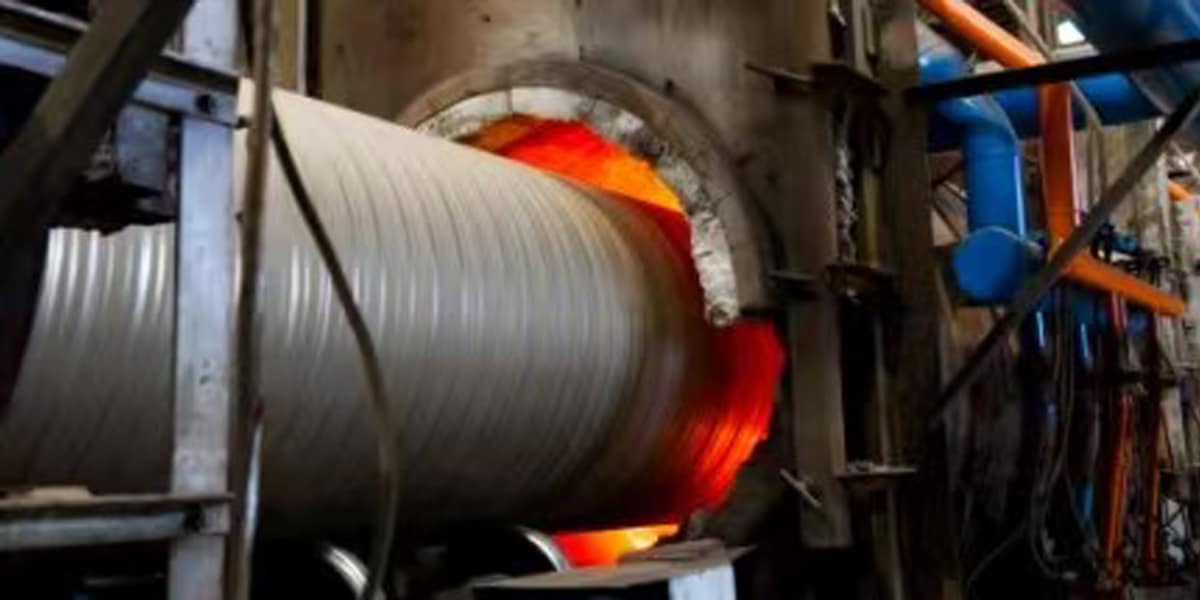
Application Performance and Quality Assurance Recommendations for FBE Coated Steel Pipes
As demands grow for corrosion resistance, safety, and longevity in pipeline systems, Fusion Bonded Epoxy (FBE) coated steel pipes are increasingly used in sectors such as oil and gas transportation, municipal water supply, and wastewater treatment. Their outstanding protective performance depends not only on the coating materials but also on a standardized FBE coating process and robust quality control system.
1. Application Performance and Key Advantages
1.1 Excellent Long-Term Corrosion Protection: FBE coatings form a dense, continuous, and strongly bonded protective film on the pipe surface. This effectively isolates the metal from moisture, oxygen, and corrosive media, greatly extending pipeline service life.
1.2 Strong Adhesion and Mechanical Resistance: When applied under controlled surface preparation and epoxy powder curing conditions, the coating adheres tightly to the substrate and offers excellent abrasion and impact resistance—ideal for underground and underwater installations.
1.3 Stable Heat Resistance: High-quality FBE coatings can withstand operating temperatures ranging from -30°C to +100°C. This makes them suitable for high-temperature fluid transportation and fully compliant with international standards such as CSA Z245.20 and ISO 21809-2.
1.4 Service Life of 30–50 Years: When applied according to proper coating thickness standards, environmental conditions, and application specifications, FBE coated steel pipes typically achieve a service life of 30 to 50 years, and even longer in ideal conditions. This dramatically reduces long-term maintenance costs.
1.5 Suitable for Multi-Layer Coating Systems: FBE is commonly used as the base layer in multi-layer systems such as 3LPE and 3LPP, offering excellent adhesion for intermediate and outer protective layers.
2. Quality Assurance and Control Recommendations
2.1 Adherence to Coating Thickness Standards
The coating thickness must meet design and standard requirements, such as:
CSA Z245.20 Class 1A: 350–500 μm
AWWA C213: ≥250 μm (for potable water systems)
ISO 21809: For oil and gas pipeline applications
Thin coatings may lead to premature failure, while excessive thickness may cause cracking or flexibility issues.
2.2 Monitor Coating Environment and Curing Conditions: Key parameters during the FBE coating process, such as temperature, humidity, pipe preheating, and epoxy powder curing time, must be precisely controlled to ensure proper cross-linking and adhesion.
2.3 Provide Complete Quality and Inspection Documentation
It is recommended that suppliers deliver:
Mill test certificates and heat traceability
Certificates for epoxy powder material
Coating Procedure Specifications (CPS)
Inspection reports (thickness, holiday test, adhesion test) for each batch
2.4 Introduce Third-Party Supervision and Acceptance: To ensure full compliance with FBE coating specifications, third-party inspections or client representatives may supervise the corrosion protection construction process to enhance credibility and quality assurance.
2.5 Standardize Field Joint Coating and Repair Methods: For welded joints or areas damaged during handling, use approved repair methods such as heat-shrink sleeves, epoxy repair kits, or spray applications to restore coating integrity and ensure continuous corrosion protection.
Case Study: Application of FBE Coated Steel Pipes in a Long-Distance Natural Gas Pipeline Project
In a major natural gas transmission project located in western China, the project team selected FBE coated steel pipes conforming to CSA Z245.20 and ISO 21809 standards. The pipeline extended over 200 kilometers across a region with complex geology, arid climate, large temperature fluctuations, and high underground water salinity—posing significant challenges for long-term corrosion protection.
Highlights of the FBE Coating Process:
Automated coating lines were used, strictly adhering to the FBE coating process. Pipe preheating temperatures were controlled between 230°C and 250°C.
Coating thickness was maintained at 400–450 μm, meeting international coating thickness standards.
The entire process was supervised by a third-party inspection agency, ensuring uniform epoxy powder curing, and performing spark tests and adhesion testing.
Performance Results:
After over 10 years in service, the FBE coating remains intact, with no signs of corrosion or delamination.
Maintenance costs have been significantly reduced, and the corrosion protection construction quality has received high praise from the project owner.
FBE coated steel pipes offer proven long-term protection when applied with precision. By following proper FBE coating processes, meeting coating thickness standards, and ensuring epoxy powder curing quality, projects can achieve up to 50 years of durability. As infrastructure demands grow, choosing the right FBE coating specification and maintaining strict quality control will remain key to pipeline reliability and performance.

